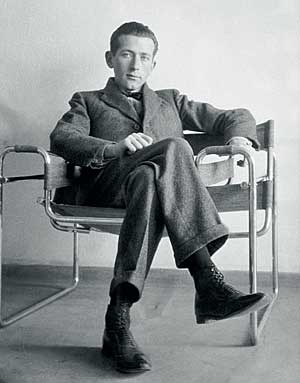The Met will develop and present programming at The Met Breuer for a period of eight years, following a collaborative agreement between the Museum and the Whitney Museum of American Art, which was formerly housed in the building and is relocating to its new museum facility in downtown Manhattan this May. In addition to exhibitions and performance, The Met Breuer will host a wide range of educational and public programming for visitors of all ages, connecting audiences with practicing artists through art-making, talks, and activities in the galleries. A dedicated page on the Met’s website—www.metmuseum.org/MetBreuer—will be updated regularly with detailed information on The Met Breuer’s exhibitions and programs.
The Metropolitan Museum of Art will launch its first season of programming in the landmark building by Marcel Breuer on Madison Avenue at 75th Street in New York, when The Met Breuer opens to the public on Thursday, March 10, 2016. Encompassing major monographic and thematic exhibitions, new commissions, performances, and an artist-in-residence series, the inaugural season at The Met Breuer will enable visitors to engage with the art of the 20th and 21st centuries through the global breadth and historical reach of the Met's unparalleled collection and scholarly resources.
“The launch of The Met Breuer marks the start of an exciting new chapter for the Museum, allowing us additional space to expand our modern and contemporary visual and performing arts program, as we concurrently redesign and rebuild our Southwest Wing,” said Thomas P. Campbell, Director and CEO of The Metropolitan Museum of Art. “We believe that contemporary art is best understood as an integral part of a broader continuum of creativity—spanning cultures, eras, and genres—and this perspective will continue to infuse our activities in all three of our locations: on Fifth Avenue, at The Cloisters, and at The Met Breuer.”
The Whitney was opened in 1966 and was designed whilst Breuer was at the height of his career. With its granite clad walls, its single window and its protruding overhang, the front of the Whitney is quite intimidating. It is unlike any other building in its vicinity and very sculptural. The space was designed with minimal internal supports and windows so that it could be extremely flexible, changing as and when it needed to suit each exhibition.
Venue.- Madison Avenue at 75th Street in New York. US






















![10 Architecture Studios Led by women [XII] 10 Architecture Studios Led by women [XII]](/sites/default/files/styles/mopis_home_news_category_slider_desktop/public/2025-03/metalocus_10-arquitectas-xi_01b.jpg?h=3b4e7bc7&itok=KFjWtS5J)














